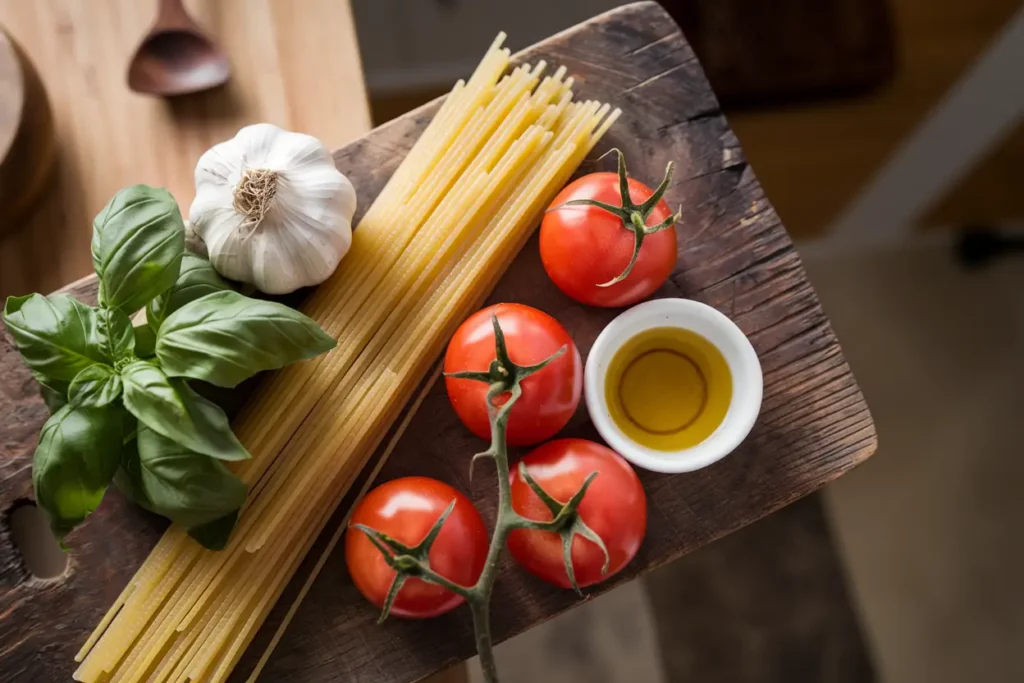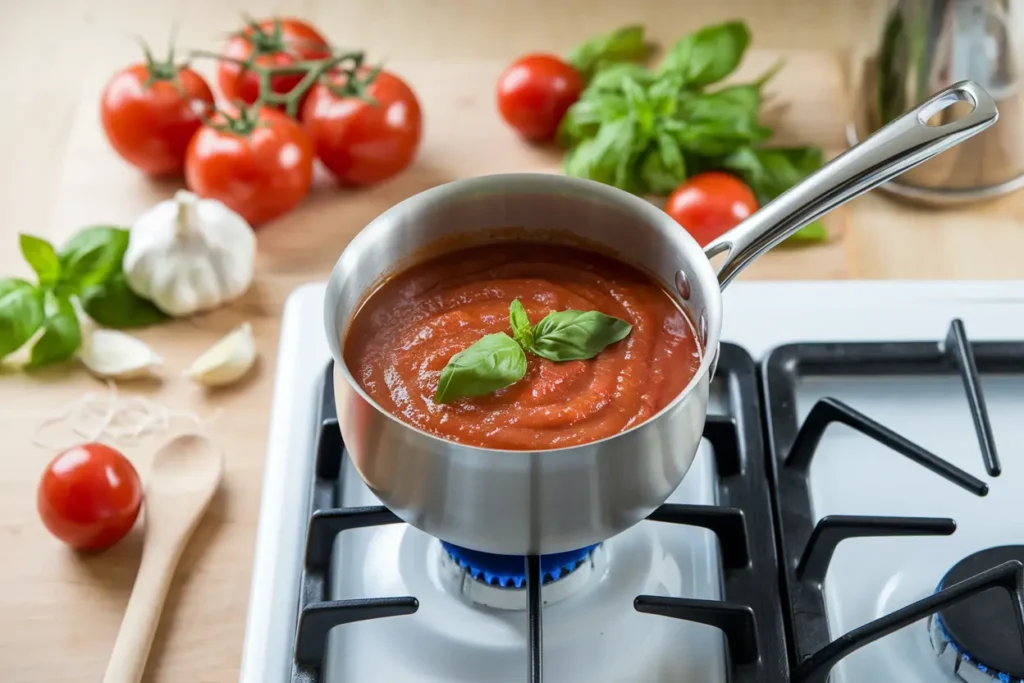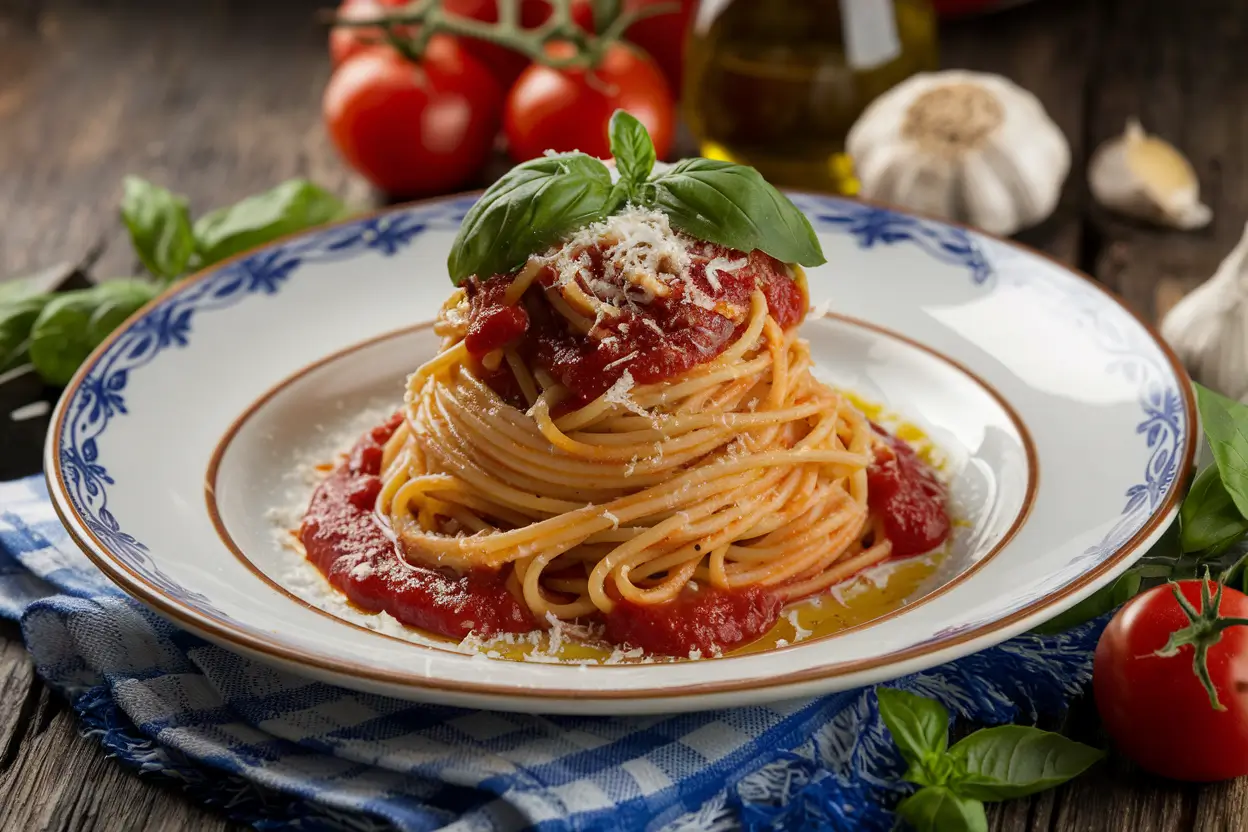Introduction to Restaurant-Style Spaghetti
What Sets Restaurant Spaghetti Apart?
Restaurant spaghetti stands out because it’s more than just pasta and sauce—it’s a masterpiece of flavor, texture, and presentation. Restaurants use high-quality ingredients, precise cooking techniques, and thoughtful plating to elevate spaghetti from ordinary to extraordinary. Achieving that same balance at home is easier than you think.
The Balance of Flavors and Textures
The secret to restaurant-quality spaghetti lies in layering flavors and textures. Perfectly cooked pasta, rich and well-seasoned sauce, and fresh garnishes like herbs or cheese come together to create a dish that’s satisfying to all the senses. The key is in attention to detail—every element should enhance the dish as a whole.
Choosing the Best Ingredients for Authentic Flavor
Why Quality Pasta Matters
Great spaghetti starts with great pasta. Restaurants often use high-quality pasta made from durum wheat, which holds its shape and texture when cooked. Look for brands labeled “bronze-cut,” as they have a rougher surface that helps sauce cling better. Fresh or handmade pasta is another excellent choice for an authentic, restaurant-like feel.
The Secret to Fresh and Flavorful Ingredients
Fresh, seasonal ingredients are a hallmark of restaurant cooking. Use vine-ripened tomatoes for your sauce, fresh basil for garnish, and high-quality olive oil for drizzling. These small upgrades can make a big difference in flavor and elevate your spaghetti to restaurant standards.

Olive Oil, Butter, and Their Impact on Taste
Olive oil and butter are essential in achieving the richness found in restaurant spaghetti. Olive oil adds a fruity, peppery note, while butter provides a creamy, luxurious finish. Use them sparingly but strategically, whether for sautéing garlic or finishing a sauce with a silky texture.
“The quality of your ingredients is the foundation of a restaurant-worthy spaghetti dish.” 🍝✨
Cooking Techniques for Perfect Spaghetti
Mastering Al Dente Pasta
Cooking spaghetti al dente—firm to the bite—is a crucial step. This texture not only feels better when eaten but also holds up better when tossed with sauce. Follow the package instructions closely, tasting the pasta about a minute before the recommended cooking time.
The Right Way to Salt and Boil Water
Season your pasta water generously—it should taste like the sea. The salt infuses flavor directly into the pasta, creating a more balanced dish. Boil the water before adding the pasta, ensuring even cooking and preventing sticking.

Draining and Tossing Like a Pro
Avoid rinsing your pasta after draining, as it washes away the starch that helps sauce cling to the noodles. Instead, transfer the pasta directly to your sauce and toss gently. Reserve some pasta water to adjust the sauce’s consistency for a glossy, restaurant-style finish.
“Pasta water is liquid gold—don’t throw it away! It’s your secret weapon for perfect sauce consistency.” 💧🍝
Crafting Sauces That Taste Like a Restaurant’s
Building a Flavorful Marinara Sauce
A great marinara sauce starts with fresh, ripe tomatoes. Sauté garlic and onions in olive oil until fragrant, then add crushed tomatoes, a pinch of sugar, and a splash of red wine. Simmer gently to reduce and concentrate the flavors. Finish with fresh basil and a drizzle of olive oil for a sauce that’s vibrant and rich.
Creating Creamy Alfredo Perfection
For a decadent Alfredo sauce, start with high-quality butter and heavy cream. Simmer the cream gently, then whisk in freshly grated Parmesan cheese until the sauce is smooth and creamy. Season with a pinch of nutmeg for depth, and toss immediately with hot pasta to coat every strand.
Experimenting with Pesto and Infused Sauces
Pesto is a versatile option that adds a fresh, herbaceous punch to spaghetti. Blend fresh basil, garlic, pine nuts, Parmesan, and olive oil until smooth. For a twist, try sun-dried tomato pesto or arugula-based pesto. Infused oils, like chili or garlic oil, can also add subtle complexity to your dish.
“A well-crafted sauce is the heart of any restaurant-quality spaghetti dish.” 🍝✨
Adding Proteins and Vegetables for a Gourmet Touch
Perfectly Cooked Shrimp, Chicken, or Sausage
Adding proteins can elevate your spaghetti to a full meal. For shrimp, sauté them in garlic and butter until pink and tender. Grilled chicken or Italian sausage adds hearty, savory flavors that pair beautifully with creamy or tomato-based sauces.
Vegetables That Elevate the Dish
Incorporate roasted or sautéed vegetables like cherry tomatoes, zucchini, or bell peppers for added texture and color. Spinach or arugula can be tossed in just before serving for a fresh, vibrant element that complements any sauce.
Enhancing Spaghetti with Creative Additions
When it comes to elevating your spaghetti, the right additions can make all the difference. Vegetables like roasted cherry tomatoes, sautéed zucchini, and caramelized onions bring depth of flavor and vibrant color to the dish. Adding spinach or arugula just before serving not only enhances the nutritional value but also adds a fresh, peppery bite that pairs perfectly with any sauce.
Proteins such as grilled chicken, shrimp, or even crumbled sausage can turn a simple spaghetti dish into a hearty, satisfying meal. Want to take it a step further? Experiment with crunchy toppings like toasted breadcrumbs or nuts for added texture. These small additions can transform your spaghetti into a gourmet creation.
For even more ideas to enhance your pasta, explore this guide on what you can add to spaghetti to make it amazing. It’s packed with tips and suggestions to help you take your spaghetti game to the next level, whether you’re looking for new ingredients, flavor combinations, or presentation ideas.
By getting creative with proteins, vegetables, and toppings, you can make your spaghetti not just a meal, but an unforgettable dining experience that’s sure to impress.
Balancing Protein, Vegetables, and Pasta
Achieving balance is key. Use proteins and vegetables sparingly to avoid overpowering the pasta. Let each component shine while working together to create a cohesive and satisfying dish.
“Balance is everything—let the pasta, sauce, and toppings work in harmony to create a restaurant-worthy meal.” 🌟🍝
Finishing Touches for a Restaurant-Worthy Dish
Plating Spaghetti with Professional Flair
Presentation is just as important as flavor. Use tongs to twirl the spaghetti into neat nests on the plate. This technique not only looks elegant but also keeps the sauce evenly distributed.
Using Fresh Herbs, Cheese, and Garnishes
Top your spaghetti with freshly grated Parmesan or Pecorino cheese for a salty, nutty kick. Add a sprinkle of chopped parsley or basil for color and a burst of freshness. For an extra touch, finish with a drizzle of high-quality olive oil or balsamic reduction.
Adding a Final Drizzle of Olive Oil or Reduction
A final drizzle of olive oil or a balsamic glaze ties all the flavors together, giving your spaghetti that luxurious, restaurant-like finish. These small details make a big difference in both taste and appearance.
“The final touches are what turn a great dish into an unforgettable experience.” 🍝✨
Common Mistakes to Avoid in Homemade Spaghetti
Overcooking the Pasta
One of the biggest mistakes home cooks make is overcooking the pasta. Spaghetti should always be cooked al dente, which means firm to the bite. Overcooked pasta becomes mushy and won’t hold the sauce well. To avoid this, check the pasta a minute or two before the package instructions say it’s done and drain it immediately.
Overloading with Sauce or Toppings
While sauce and toppings are essential, too much can overwhelm the dish and mask the flavors of the pasta itself. Restaurants often use a light coating of sauce, just enough to cling to each strand of spaghetti. Similarly, toppings like cheese or proteins should enhance the dish, not overpower it.
Skipping Essential Finishing Touches
The little details matter. Skipping steps like salting the pasta water, using fresh herbs, or drizzling olive oil at the end can result in a dish that feels flat. These small additions elevate the overall flavor and create a more cohesive, restaurant-like experience.
“Perfection lies in the details—each step, no matter how small, plays a role in creating the perfect plate of spaghetti.” 🍝✨
Pairing Your Spaghetti with Sides and Drinks
Choosing the Right Salad or Bread
A fresh Caesar salad or mixed greens with a light vinaigrette pairs beautifully with spaghetti. For a more indulgent option, garlic bread or focaccia adds a warm, buttery contrast. The key is to choose sides that complement the pasta without overshadowing it.
Selecting Wines and Beverages to Complement the Dish
The right beverage can enhance your spaghetti experience. A classic marinara pairs well with red wines like Chianti or Merlot, while creamy Alfredo sauces go beautifully with white wines such as Chardonnay. For non-alcoholic options, sparkling water with lemon or a chilled iced tea works wonderfully.
Light Desserts to Round Out the Meal
End your meal on a sweet note with a light dessert. Tiramisu, panna cotta, or a scoop of gelato are all excellent choices that won’t feel too heavy after a hearty plate of spaghetti.
“Pairing the right sides and drinks with your spaghetti turns a simple dinner into a memorable dining experience.” 🍷🍝
Conclusion: Bringing Restaurant Spaghetti to Your Home
Key Takeaways for Amazing Spaghetti
Achieving restaurant-quality spaghetti at home is all about attention to detail. Use high-quality ingredients, cook your pasta al dente, and craft a flavorful sauce. Don’t forget the finishing touches—fresh herbs, grated cheese, and a drizzle of olive oil can make all the difference.
Encouragement to Experiment and Enjoy
Don’t be afraid to get creative and try new ingredients or techniques. Cooking is an art, and spaghetti is your canvas. With practice and a little inspiration, you can turn an everyday dish into a restaurant-worthy masterpiece that impresses family and friends.
“Spaghetti isn’t just a meal—it’s an experience waiting to be created in your kitchen.” 🍝✨

